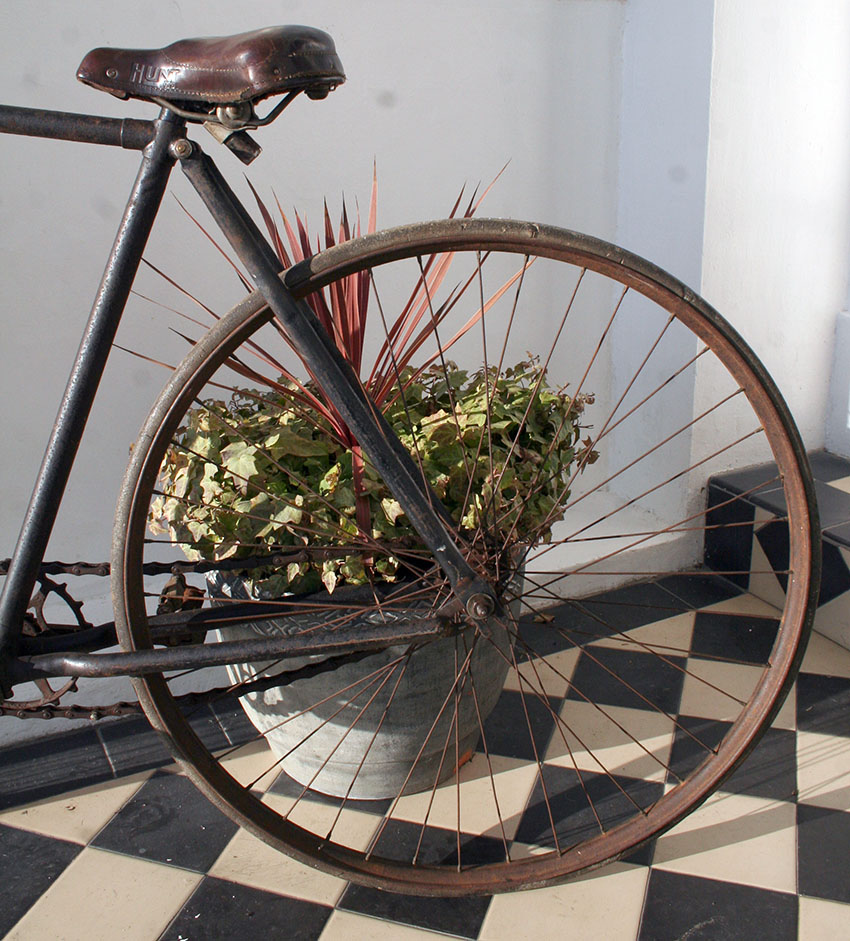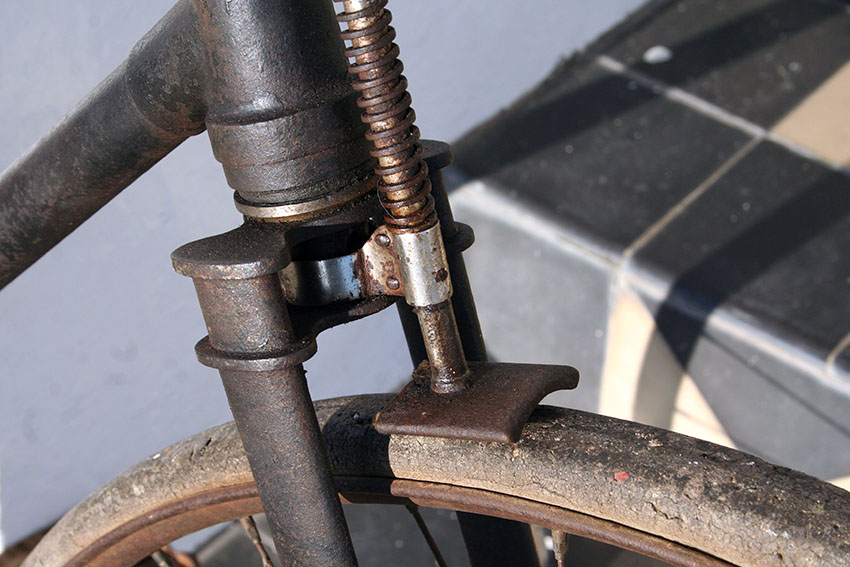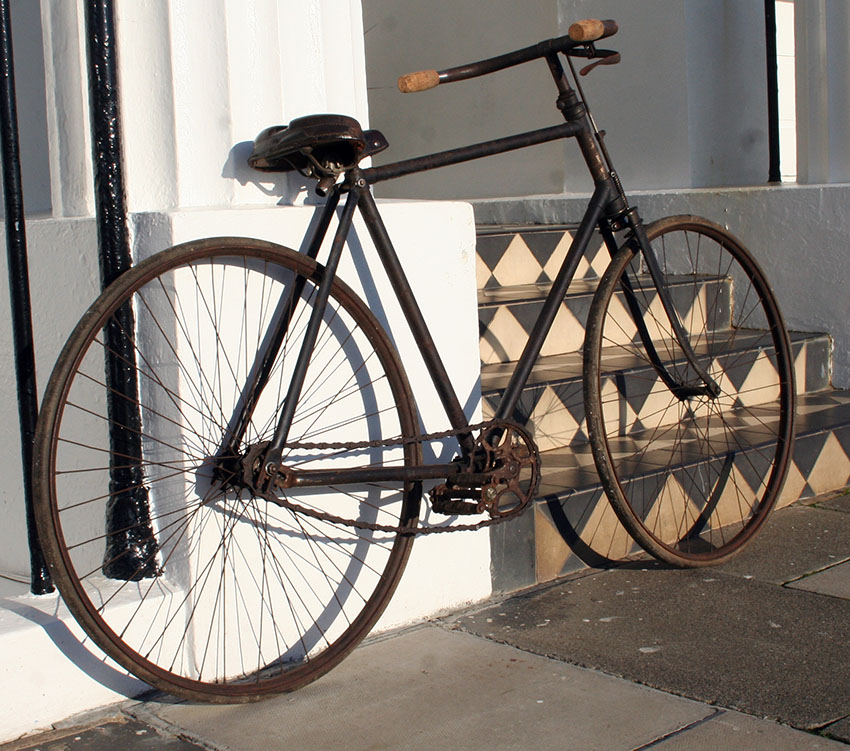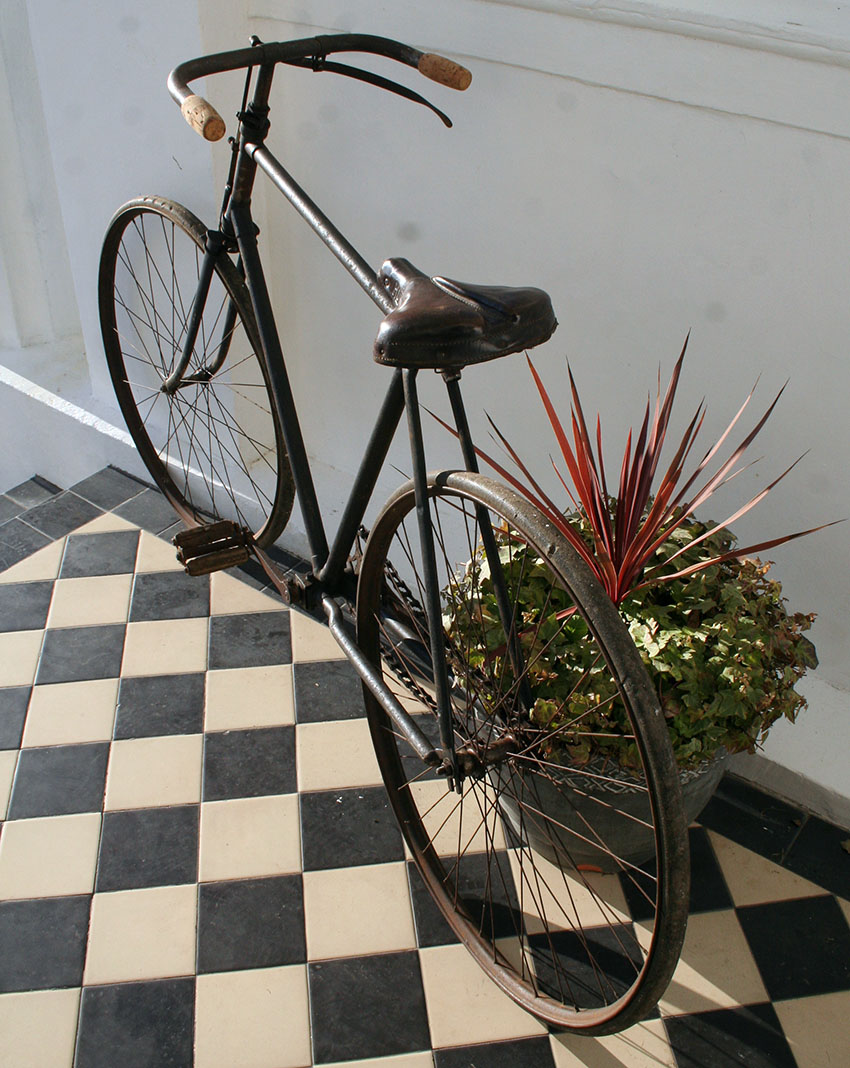-
Browse by Tour
* FREE BOOK: Origins of the Cross Frame* THE MUSEUM COLLECTION1. SAFETY BICYCLES: 1886-18992. VELOCIPEDES & HOBBY HORSES3. VINTAGE CYCLES FOR SALE4. THE BLOOMER CLUB5. ROADSTERS: 1900 onwards6. INFO7. VIDEOS8. HIRE a WW1 & WW2 MILITARY BICYCLE DISPLAY9. BAD TEETH NO BARDESIGNS: CHAINLESS BICYCLESDESIGNS: CONVERTIBLE SAFETY BICYCLES & TRICYCLESDESIGNS: CROSS FRAME SAFETY BICYCLES, 1886 onwardsDESIGNS: EARLY FOLDING BICYCLESDESIGNS: OPEN, DUPLEX, TRUSS, GIRDER & UNUSUAL FRAMESDESIGNS: SPRING FRAMES & FORKSDESIGNS: TALL BIKES (28" Frames or Taller)DESIGNS: TRUSS-BRIDGE FRAMES / ARCH BARSDESIGNS: UPWARD SLOPING TOP TUBESDESIGNS: X FRAMES, 1896 onwardsENGINES & JUVENILE: SCOOTERSENGINES: MOTOR BICYCLES, CYCLEMOTORS, etcEVENTSHISTORY: CYCLE GUNSHISTORY: EARLY BICYCLE BRAKESHISTORY: EARLY BICYCLE HUBS & GEARSHISTORY: EARLY BICYCLE PEDALSHISTORY: EARLY BICYCLE SADDLESHISTORY: EARLY BICYCLE TYRESHISTORY: Early Leather Tool bags & AccessoriesHISTORY: EARLY SKATESHISTORY: INNOVATIONS & ATTITUDESHISTORY: PATENTSJUVENILE BICYCLES & TRICYCLES: 1860s-1900JUVENILE BICYCLES & TRICYCLES: 1900-1930JUVENILE BICYCLES & TRICYCLES: 1930s-1950sJUVENILES: COASTER WAGONS & SLEDSJUVENILES: COWBOYS & INDIANSJUVENILES: HORSES (Bicycles, Tricycles, Rocking)JUVENILES: Irish Mails, Pedal Cars & WagonsJUVENILES: SKIPPY RIDING TOYSMAKERS: BSA Cycle CoMAKERS: BSA FITTINGS MACHINESMAKERS: CENTAUR Cycle CoMAKERS: CHATER LEA Mfg CoMAKERS: COLUMBIA (Pope Mfg Co)MAKERS: Components Ltd & Ariel Cycle CoMAKERS: Cycles PEUGEOTMAKERS: Cycles TERROTMAKERS: ELSWICK & HOPPERMAKERS: HUMBER Cycle CoMAKERS: IVER JOHNSONMAKERS: LEA FRANCIS Cycle CoMAKERS: New Hudson Cycle CoMAKERS: PEDERSENMAKERS: PREMIER Cycle CoMAKERS: QUADRANT Cycle CoMAKERS: RALEIGH Cycle CoMAKERS: ROVER Cycle CoMAKERS: ROYAL ENFIELD Cycle CoMAKERS: RUDGE & RUDGE-WHITWORTH Cycle CoMAKERS: SINGER Cycle CoMAKERS: SUNBEAM (Marston Cycle Co)MAKERS: SWIFT Cycle Co (Coventry Machinists Co)MAKERS: TRIUMPH Cycle CoMILITARY BICYCLES: 1886-1914MILITARY BICYCLES: 1899-1902 BOER WARMILITARY BICYCLES: 1914-18 WORLD WAR 1MILITARY BICYCLES: 1930s-1950s + WORLD WAR 2MUSEUMSORIGINS: AMERICAN BICYCLESORIGINS: EMPIREORIGINS: FRENCH BICYCLESPARTNERS: MALE + FEMALE BICYCLESRECENTLY ADDED: 2019RECENTLY ADDED: 2020/2021RECENTLY ADDED: 2022/2023STYLES: CHARACTER BIKESSTYLES: PASSENGER BICYCLES, RICKSHAWS, FORECARSSTYLES: RECUMBENTS, SEMI-HORIZONTAL, VELOCARSSTYLES: Road / Track Racers & LightweightsSTYLES: SIDECARS & TRAILERSSTYLES: TANDEMSSTYLES: TRICK RIDERS, CIRCUS, CLOWN & CUSTOM BIKESSTYLES: TRICYCLESSTYLES: WATER, ICE, SAIL & RAILWAY BIKESSTYLES: WORKING BICYCLES & TRICYCLES
-
Browse by Date
1800181818191839184518601866186718681869187018711872187318741875187618771878187918801881188218831884188618871888188918901891189218931894189518961897189818991900190119021903190419051906190719081909191019111912191319141915191619171918191919201920s19211922192319241925192619271928192919301931193219331934193519361937193819391940194119421943194419461947194819491950195119521953195419551956195719581959196019611962196319641965196619671968196919701972197319741975197619771978197919801981198319841985198819891990199219961999
- All Pages
- Info
- For Sale


























































